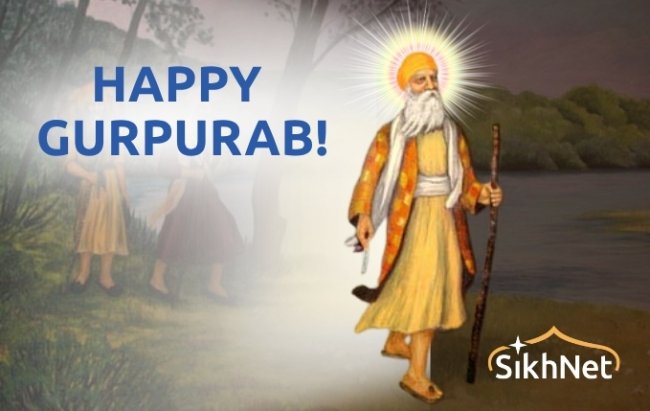This is a Rejoinder to the article: IK-OANKAR (ੴ) - Guru Nanak’s Concept of Unity in Diversity of World Religions - Hardev Singh Virk
https://www.sikhnet.com/news/ik-oankar-%E0%A9%B4
By Prof. Devinder Singh Chahal Institute for understanding Sikhism Laval, Quebec, H7W 5L9, Canada [email protected]
INTRODUCTION
Dr. Hardev Singh Virk, a famous Physicist and theologian, writes “IK-OANKAR (ੴ) - Guru Nanak’s Concept of Unity in Diversity of World Religions. He says that it is based on “DS Chahal (Chahal, 2023 a) has recently published a special issue (Silver Jubilee) of Understanding Sikhism: The Research Journal, which has nearly a dozen articles on the concept of God in different religions of the world. There are two articles: ੴ by DS Sekhon (Sekhon, 2023) and “Ik Onkar: Some Reflections” by Eleanor Nesbitt (Nesbitt, 2023) dealing with the topic for discussion in my paper. He admits, "I have made liberal use of their ideas as I find both these authors at the same wavelength, or in resonance with my ideas.”
It is hard for me to digest in what way ੴ is related to the “Unity in the Diversity of all world religions”, mentioned in the title since ੴ is an original and unique logo representing the Eternal Entity (God) conceptualization by Guru Nanak and it is different than the concept of God in other religions. However, “Unity in diversity” is a very old concept dating back to ancient times in Eastern and Western old-world cultures. It is an expression of harmony and unity between dissimilar individuals or groups. Many governments and institutions today still hold up this time-honored concept as a worthy ideal. (Anonymous, n.d.) It indicates that “Unity in Diversity” does not involve religion or God.
Therefore, even the title of the subject of Dr Virk is not justified.
Dr. Virk quotes the following scholars, who admit that ੴ is a unique alphanumeric divine symbol called logo:
“In Sikh religion, God is represented by a unique alphanumeric divine symbol, ੴ, called a logo by Eleanor Nesbitt and DS Chahal (Chahal, 2020) (Nesbitt, 2005). (Nikky-Gurinder, 2011) (Nikky-Gurinder, 2011) illustrates that three modes of knowledge have been used to signify the Divine symbol - numerical, alphabetical, and geometrical. Significantly, the prime number ‘1’ is recognized by individuals of all languages, cultures, and religions. It is followed by the alpha of the Gurmukhi script, which is the sign for One (Being) and completed by the sign for Kar, a geometrical arc reaching away into space.”
Nesbitt concludes ੴ is a logo. Nikki-Gurinder is described ੴ in a short but ambiguous way. I have been explaining it explicitly for the last 23 years. (Chahal, 2000) (Chahal, 2003) (Chahal, 2005) (Chahal, 2021) (Chahal, 2018) (Chahal, 2023a) (Chahal, 2023b) (Chahal, 2020)
Therefore, it is evident that Nesbitt has accepted ੴ as a symbol or logo even then Dr. Virk has written the following statement ignoring that fact:
“Therefore, to call it “Logo” [and say it is “one word”] is unpardonable sacrilege. Only an illiterate or ignorant person would commit it in the name of scholarship or scholastic investigation. In any case, “Ik Oankar” is not a word; it is composed of a ‘Numeral’ [੧] and the open ‘Oorha’ [ਓ]. By this token, it is not at all a “Logo” because Guru Nanak Dev was not marketing it as merchandise of the Sikh Faith—it just dawned on him because the Lord had chosen him for an unprecedented divine mission.”
It means Dr. Nesbitt, who accepts ੴ as a logo, also falls in this category.
Dr. Virk is ignoring the fact that Guru Nanak was the first to design a logo ੴ to represent the Eternal Entity (God) conceptualized by him in the 15th century. Guru Nanak was the first to formulate a system to design a logo using different components, i.e., taking ੧ (one) from numerals, open ਓ (oora) from Gurmukhi script, and its extended end from Geometry. By combining all these components, he created a logo, ੴ. This is an original and unique logo for the Eternal Entity (God) ever designed by any founder of a religion. Guru Nanak was not using it to sell anything but to explain that this logo, ੴ, stands for the Eternal Entity (GOD) as he conceptualized it. Only after about four centuries did modern companies of the 20th century start to use logos for their names.
Therefore, in what way is calling ੴ as a logo designed by Guru Nanak in the 15th century for the Eternal Entity (God) an unpardonable sacrilege?
Moreover, when Guru Nanak designed this logo for the first time in the 15th century, no other logo was used by any company in the world.
Dr. Virk further writes:
“In any case, “Ik Oankar” is not a word; it is composed of a ‘Numeral’ [੧] and the open ‘Oorha’ [ਓ]. By this token, it is not at all a “Logo”…”
I never said that ੴ is a word. I always write that it is a “logo” comprised of the numeral One, Open Oora, and its extended end, as in geometry, to show infinity for the last more than 23 years. Because of these characteristics, ੴ becomes an original and unique logo designed by Guru Nanak to represent his conceptualized Eternal Entity (God).
Misunderstanding of ੴ
I want to emphasize the background of ੴ being misunderstood. Baden Singh, a Nirmala trained at Banaras (Varanasi), interpolated ੴ as Ek Oankar in the Faridkot Vala Teeka in 1883 under the influence of Vedic and Vedantic philosophies. Bhai Gurdas, around 1604, again declared ੴas Ek Oankar. (J. Singh, n.d.) Thereafter, Prof Sahib Singh also accepted it as Ek Oankar. (S. Singh, 1972) Baden Singh explained its origin from OM in detail. Similarly, Prof. Sahib Singh did so in his Darpan of Guru Granth Sahib. Dr. Bhatti (2019) and Principal Harbhajan Singh (unpublished work) have also explained in detail the origin of ੴ from OM. Now ੴ is written by Sikhs and the non-Sikhs as Ek Oankar in their writings. However, Oankar or Onkar represents OM (AUM) in the Upanishads. Om (ॐ) does not represent God. Om is considered the very first sound of the universe. "Before the sound of OM, there was nothing."(Regan, 2020)
Therefore, Dr. Virk is not only rejecting the originality and uniqueness of the logo of the Eternal Entity (God) but also making Guru Nank believe in OM, which represents the Trinity in anthropomorphic forms—Brahma, Vishnu, and Shiva. However, Guru Nanak rejects the Trinity of God.
Refusal to Accept ੴas Ek Oankar or Ek Onkar
Nirmal Singh Kalsi (1996) may be the first who refused to accept ੴ as Ek Oankar instead he pronounced it as “Ekoooooooo…”. But he ignores pronouncing open Oora with its extended end (ਓ with extended, (geometrical arc reaching away upwards). After that, Gulbarg Singh Basi (2020) and Dr. Iqbal Singh Dhillon (2019) followed him and pronounced ੴ as “Ekko.” However, Basi and Dhillon involve an open Oora (ਓ) with One of ੴ to pronounce Ekko and ignore its extended end (geometrical arc reaching away upwards) as calligraphy. While Col. Manmohan Singh Scout thinks that ੴ should be pronounced as ਏਕੰਕਾਰ (akankar) (Personal communication). Gurpreet Singh (2022) explained in detail that it should be pronounced as “Ekankar” since this word has been used extensively in the Aad Guru Grant Sahib. However, Bhai Gurdas has already pronounced One in ੴ as ਏਕੰਕਾਰ (Ekankar), meaning Eko Ek (One and Only) and open Oora (ਓ) as ‘Oankar’ but ignored to pronounce the extended end (geometrical arc reaching away upwards) of open Oora (ਓ). The open Oora (ਓ) with its extended end (geometrical arc reaching away upwards) is the most important qualifier word and sign referencing to the One of ੴ to make its complete pronunciation as ਇਕੁ ਓ ਬੇਅੰਤ (Ek Oh Beant) in Punjabi and as 'That the One and Only is Infinite' in English. (Chahal, 2018)
I repeat the explanation of the logo, ੴ, designed by Guru Nanak for the Eternal Entity (God) from the same special issue (Silver Jubilee) of Understanding Sikhism: The Research Journal as follows:(Chahal, 2023a)
Guru Nanak conceptualized God in a logo, ੴ, by taking ੧ (one) from numerals, open ਓ (Oora) from Gurmukhi script, and its extended end from Geometry. The ੧ (One) is taken from Numerals, but in science, it is a Physical ONE like the SINGULARITY of Albert Einstein. Some scientists consider SINGULARITY as NOTHINGNESS. But for Nanak, Nothingness is ਸੰਨੁ (Sunn) or ਨਿਰਗੁਨ (Nirgun) state of God. The ਓ (open Oora) is taken from the Gurmukhi Alphabet, but here it is an abbreviation of ਓਹ (Oh – That). The (extended end) of ਓ (open Oora) is taken from geometry representing INFINITE (amount of Energy). The ਓ (open Oora) and its extended end are qualifier words for ੧ (One) in ੴ, indicating That ‘One’ in ੴ is Infinite (amount of energy). Therefore, ੴ can be pronounced as ਇਕੁ ਓ ਬੇਅੰਤ (Ek Oh Beant) in Punjabi and as 'That the One and Only is Infinite' in English.
Those scientists and theologians who call ੴ as Ek Oankar or Ek Onkar, which represents OM, are not only undermining the originality and uniqueness of Guru Nanak in designing a logo, ੴ, for the Eternal Entity (God) conceptualized by him but also misleading the Sikhs that Guru Nanak accepts OM as his God. Some scientists and theologians try to camouflage the truth by saying Ek Oankar or Ek Onkar is a special word of Guru Nanak and does not represent OM. However, Oankar or Onkar means OM in Upanishads which cannot be denied on any ground.
It is for the Sikh intelligentsia whether to accept an original and unique logo, ੴ, to call it ਇਕੁ ਓ ਬੇਅੰਤ (Ek Oh Beant) or Ek Oankar or Ekonkar, which stands for OM.
REFERENCES
Anonymous. (n.d.). Unity in Diversity: A Worthy Journey, Not Just a Desired Outcome. s://dignitydialogues.com/unity-in-diversity/
Basi, G. S. (n.d.). The Eternal Precepts of Sikhi. Sikh Bulletin, 23(1), 19–23.
Basi, G. S. (2020). ੴ IKKO as Its Proper Pronunciation. Sikh Bulletin, 22(2), 9–14. http://www.sikhbulletin.com
Bhatti, S. S. (2019). GURU NANAK DEV ─ Dispenser of Love and Light. White Falcon Publishin.
Chahal, D. S. (2000). The Commencing Verse of the Aad Guru Granth Sahib: A Scientific and Logical Interpretation. Understanding Sikhism Res. J., 2(1), 8–11. https://www.iuscanada.com/static/articles/2000/j0201p08.pdf
Chahal, D. S. (2003). JAP: The Essence of Nanakian Philosophy. Institute for Understanding Sikhism, Distributors: Singh Brothers, Amritsar.
Chahal, D. S. (2005). OANKAR OR OMKAR (ਓਅੰਕਾr or ਓਮਕਾਰ ): The Misunderstood Word. Understanding Sikhism Res. J., 7(2), 17–31. https://www.iuscanada.com/static/articles/2005/j0702p17.pdf
Chahal, D. S. (2018). JAP: The Essence of Nanakian Philosophy (a scientific and Logical Interpretation). https://www.iuscanada.com/static/books/2018/JAP2ndEdition2018.pdf
Chahal, D. S. (2020). UNDERSTANDING ੴ DESIGNED BY GURU NANAK TO REPRESENT ETERNAL ENTITY (GOD). The Sikh Pylosophy Net. https://www.sikhphilosophy.net/threads/understanding-designed-by-guru-na...
Chahal, D. S. (2021). Sikhi and Science: The Eternal Entity (God)Conceptualized by Guru Nanak in a Logo, ੴ. Hor J. Hum. & Soc. Sci. Res., 3(2), 23–36. https://doi.org/10.37534/bp.jhssr.2021.v3.n2.id1121.p23.%0A
Chahal, D. S. (2023a). Concept of God. Unerstanding Sikhism Res. J., 25(1), 7–29. https://www.iuscanada.com/static/articles/2023/j2501p07.pdf %0A
Chahal, D. S. (2023b). Cosmology in Science and Nanakian Philosophy. Hum. Soc. Sci. Res., 5(1), 34–48.
Dhillon, I. S. (2019). ੴda ucharan ate bhave arth. Journal Parkh, Punjab Universty, Chandigarh, 1 & 2, 206–222.
Kalsi, N. S. (1996). Beej Mantar Darshan (Punjabi). Kalsi Technologies, # 15, 7711 - 128th Street, Surrey, BC, Canada.
Nesbitt, E. (2005). SIKHISM. A Very Short Introduction. Oxford University Press, UK.
Nesbitt, E. (2023). IK OANKAR SOME REFLECTION. Understanding Sikhism Res. J., 25(1), 5–6.
Nikky-Gurinder, K. S. (2011). Sikshism: An Introduction. I.B. Tauris& Co Lt.
Regan, S. (2020). The Meaning Behind the Om Symbol & Sound, Plus How to Use It Respectfully.
Sekhon, D. S. (2023). ੴ. Undertanding Sikhism Res. J., 25(1), 67–71. https://www.iuscanada.com/static/articles/2023/j2501p67.pdf
Singh, G. (2022). Pronouncing ੴ. Sikkh Bulletin, 24, 35–41. ww.sikhbulletin.com
Singh, J. (n.d.). Bhai Gurdas Vaaran. http://searchgurbani.com/bhai_gurdas_vaaran/vaar/3/pauri/15
Singh, S. (1972). Sri Guru Granth Sahib Darpan.

